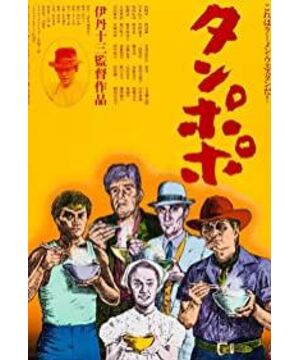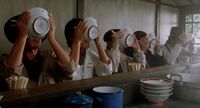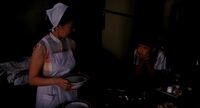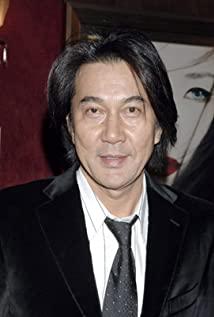When I saw this title, I thought, what does "dandelion" refer to? The film breaks the boundary between the audience and the screen at the beginning, as if it is aimed at dialogue, and suddenly thinks of Brecht's efforts to break the illusion, is Itami Thirteen too? The reappearance of the characters in the opening scene is impressive. The metaphor of appetite and sexual desire constitutes a vivid picture. The sensuality of women is reminiscent of the wild scene in "Funeral" and also of the painter. The big bathing girl painted by Angel.
The appearance of dandelion constitutes a contrast with the above, this light and beautiful thread, with a bit of tenacity in the lightness, as full of tenacity as they insist on completing the ramen business. Reading a book about ramen on a rainy night, I met a small ramen restaurant. The heroic style of Heilang is extraordinary. It is worth noting that the fighting scenes in the early Japanese movies are also so simple, one punch is one punch, one kick is one foot. Heroes are always able to gather a group of people, just like the goodness and beauty represented by tanpopo, they gather together to accomplish one thing, a thing that may be trivial to the world, but is so real and full of warmth. than the emptiness of pleasure.
A ramen restaurant always ends up being done, but does the villain have to die? He died in the movie, and he was still talking about eating when he died.
The ramen restaurant is completed, and Heilang's will have to hide his merits and fame, but the key shows such a sympathetic frown that he can't bear to separate, which makes people want to laugh. Dandelion has entered a new stage of life, but in the movie, she is always a less female character. She is as innocent and lovely as a child, dispelling all desires.
The scene of sucking nipples at the end of the movie makes people wonder, the beginning of a new life? Circular history? In the film, there are many representatives of old age, illness, death, children, health and life. On the intertwined network road, we can see many colors by following the footsteps of the protagonists. It belongs to Japan in the 1980s, and it also belongs to The predicament and sense of emptiness faced by modern people have always been there and have never been resolved.
The amazing thing is that the director who chose to use death to resist the world told us to live like a dandelion and persist.
View more about Tampopo reviews











